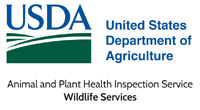U.S. Department of Agriculture: Animal and Plant Health Inspection Service
Document Type
Article
Date of this Version
12-5-2022
Citation
Kading, R.C.; Borland, E.M.; Mossel, E.C.; Nakayiki, T.; Nalikka, B.; Ledermann, J.P.; Crabtree, M.B.; Panella, N.A.; Nyakarahuka, L.; Gilbert, A.T.; et al. Exposure of Egyptian Rousette Bats (Rousettus aegyptiacus) and a Little Free-Tailed Bat (Chaerephon pumilus) to Alphaviruses in Uganda. Diseases 2022, 10, 121. https://doi.org/ 10.3390/diseases10040121
Abstract
The reservoir for zoonotic o’nyong-nyong virus (ONNV) has remained unknown since this virus was first recognized in Uganda in 1959. Building on existing evidence for mosquito bloodfeeding on various frugivorous bat species in Uganda, and seroprevalence for arboviruses among bats in Uganda, we sought to assess if serum samples collected from bats in Uganda demonstrated evidence of exposure to ONNV or the closely related zoonotic chikungunya virus (CHIKV). In total, 652 serum samples collected from six bat species were tested by plaque reduction neutralization test (PRNT) for neutralizing antibodies against ONNV and CHIKV. Forty out of 303 (13.2%) Egyptian rousettes from Maramagambo Forest and 1/13 (8%) little free-tailed bats from Banga Nakiwogo, Entebbe contained neutralizing antibodies against ONNV. In addition, 2/303 (0.7%) of these Egyptian rousettes contained neutralizing antibodies to CHIKV, and 8/303 (2.6%) contained neutralizing antibodies that were nonspecifically reactive to alphaviruses. These data support the interepidemic circulation of ONNV and CHIKV in Uganda, although Egyptian rousette bats are unlikely to serve as reservoirs for these viruses given the inconsistent occurrence of antibody-positive bats.
Included in
Natural Resources and Conservation Commons, Natural Resources Management and Policy Commons, Other Environmental Sciences Commons, Other Veterinary Medicine Commons, Population Biology Commons, Terrestrial and Aquatic Ecology Commons, Veterinary Infectious Diseases Commons, Veterinary Microbiology and Immunobiology Commons, Veterinary Preventive Medicine, Epidemiology, and Public Health Commons, Zoology Commons


Comments
U.S. government work; CC-BY